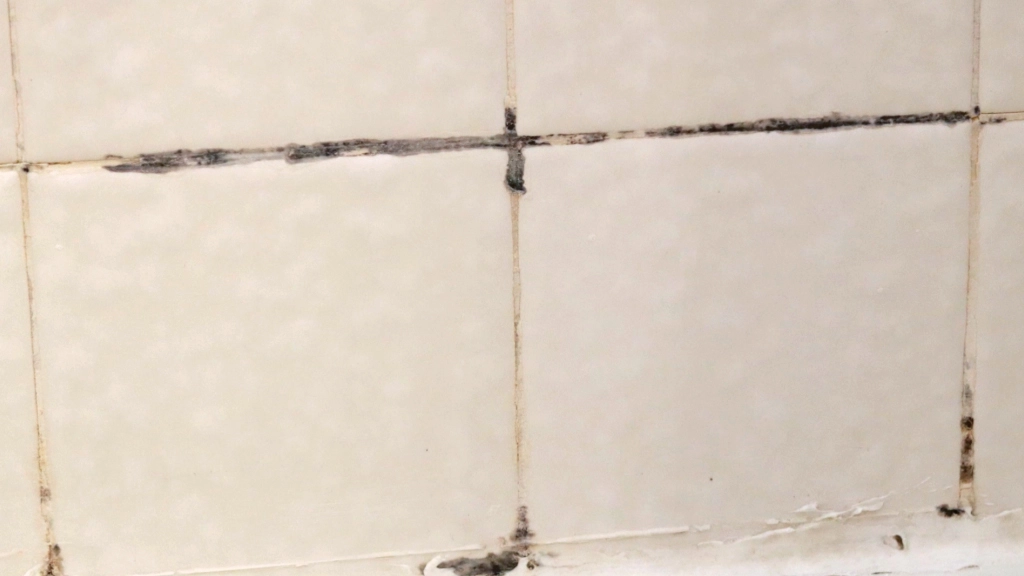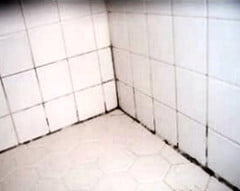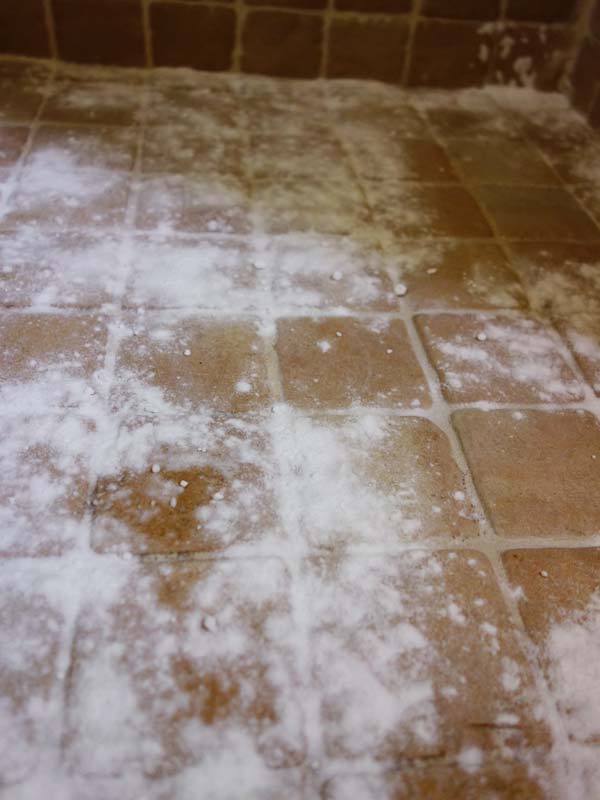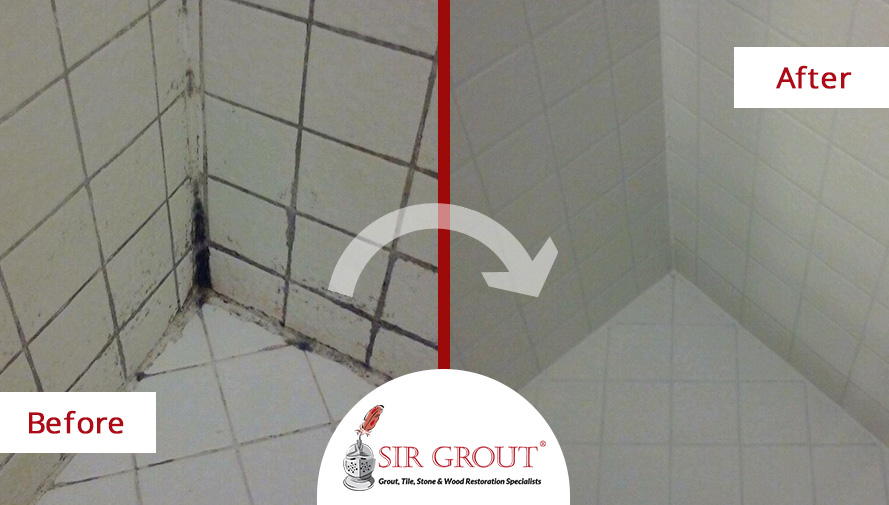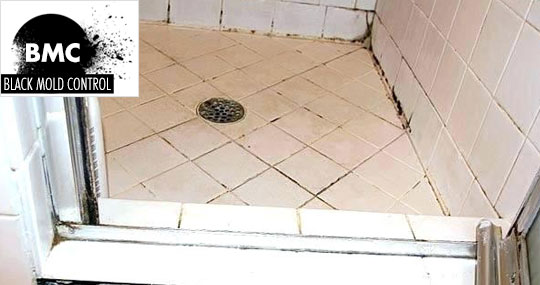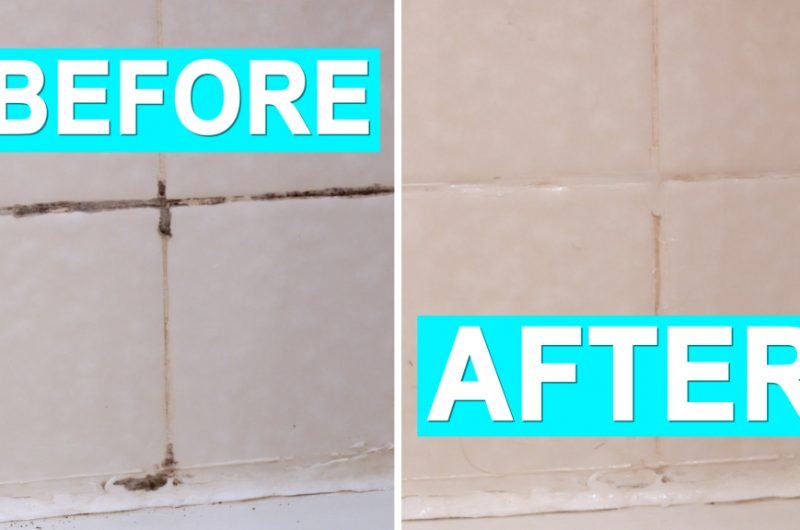Understanding the Dangers of Black Mold in Bathroom Tile Grout
Black mold in bathroom tile grout is not only unsightly but also poses serious health risks to you and your family. Understanding the dangers associated with black mold is essential for maintaining a healthy living environment. Here are some key points to consider:
- Respiratory Issues: Black mold produces spores that can become airborne and be inhaled, leading to respiratory problems such as coughing, wheezing, and throat irritation. Individuals with asthma or allergies may experience exacerbated symptoms in the presence of black mold.
- Allergic Reactions: Some people are allergic to mold, and exposure to black mold spores can trigger allergic reactions such as sneezing, runny nose, itchy eyes, and skin rashes. Prolonged exposure to mold allergens can worsen symptoms over time.
- Toxic Effects: Certain species of black mold, such as Stachybotrys chartarum, produce mycotoxins that can have toxic effects on the human body. Exposure to these toxins can cause symptoms ranging from headaches and fatigue to nausea and even neurological problems in severe cases.
- Compromised Immune System: Individuals with weakened immune systems, such as the elderly, young children, and those with underlying health conditions, are particularly vulnerable to the harmful effects of black mold exposure. Mold-related illnesses can be more severe and difficult to treat in these populations.
- Structural Damage: In addition to health risks, black mold can also cause structural damage to your home. When left unchecked, mold growth can penetrate porous materials like grout and eventually compromise the integrity of your bathroom walls and floors.
- Legal Liability: If black mold is discovered in rental properties or homes for sale, it can lead to legal issues and financial liabilities for property owners. Failure to address mold problems promptly can result in lawsuits from tenants or buyers seeking damages for health problems caused by mold exposure.

Common Causes of Black Mold Growth in Bathroom Tile Grout
Black mold thrives in damp and humid environments, making bathroom tile grout an ideal breeding ground. Understanding the common causes of black mold growth in bathroom tile grout can help you prevent its occurrence. Here are some factors to consider:
Poor Ventilation: Inadequate ventilation in the bathroom can trap moisture and humidity, creating the perfect conditions for mold growth. Without proper airflow, moisture from showers, baths, and sinks can linger in the air and settle into the grout lines, promoting mold growth over time.
Leaky Fixtures: Leaky faucets, showerheads, or pipes can contribute to moisture buildup in the bathroom, providing ample water supply for mold spores to thrive. Even small drips or leaks can lead to significant mold growth if left unchecked.
Excess Humidity: High humidity levels in the bathroom, especially in poorly ventilated areas like shower stalls and enclosed spaces, create a conducive environment for mold growth. Activities such as showering or running hot water can increase humidity levels, accelerating mold growth in tile grout.
Lack of Cleaning: Neglecting to clean bathroom tile grout regularly allows dirt, soap scum, and other organic matter to accumulate, providing nutrients for mold growth. Over time, these organic materials can become a breeding ground for mold spores, leading to widespread infestation.
Water Intrusion: Water intrusion from sources such as roof leaks, plumbing leaks, or improper sealing around windows and doors can introduce excess moisture into the bathroom, promoting mold growth in tile grout and other porous surfaces.
Grout Sealing Issues: Improperly sealed or deteriorated grout lines can allow water to penetrate the tile grout, leading to moisture buildup and mold growth. Periodically inspecting and resealing grout lines can help prevent water infiltration and reduce the risk of mold infestation.
How to Identify and Remove Black Mold from Bathroom Tile Grout
Identifying and removing black mold from bathroom tile grout is essential for maintaining a clean and healthy living environment. Here’s a step-by-step guide on how to effectively identify and eliminate black mold from your bathroom:
Visual Inspection: Begin by visually inspecting your bathroom tile grout for signs of black mold growth. Look for dark, discolored patches or spots along the grout lines, especially in areas prone to moisture and humidity such as showers, tubs, and sinks.
Musty Odor: Mold often emits a musty odor that is distinctive and unpleasant. If you notice a lingering musty smell in your bathroom, it could indicate the presence of hidden mold growth behind tiles or within grout lines.
Testing: If you suspect mold but are unable to visually confirm its presence, consider using a mold testing kit to collect samples from your bathroom surfaces. These kits can help identify the type and concentration of mold present, providing valuable information for remediation efforts.
Safety Precautions: Before attempting to remove black mold, it’s important to take safety precautions to protect yourself from exposure to mold spores and toxins. Wear protective gear such as gloves, goggles, and a mask to prevent inhalation or skin contact with mold.
Cleaning Solutions: There are several effective cleaning solutions available for removing black mold from bathroom tile grout. Common options include bleach, vinegar, hydrogen peroxide, or commercial mold removal products. Choose a solution that is suitable for your grout type and follow the manufacturer’s instructions for application.
Scrubbing: Using a stiff-bristled brush or scrubbing pad, gently scrub the affected grout lines with the cleaning solution to loosen and remove mold stains. Work in small sections, applying firm but not excessive pressure to avoid damaging the grout.
Rinsing: After scrubbing, rinse the cleaned grout lines thoroughly with water to remove any remaining mold spores and cleaning residue. Use a clean sponge or cloth to wipe away excess moisture and allow the grout to dry completely.
Preventive Measures: To prevent future mold growth, it’s essential to address underlying moisture issues and maintain proper ventilation in the bathroom. Consider installing a ventilation fan, repairing leaks promptly, and sealing grout lines to prevent water infiltration.
Professional Help: If black mold infestation is widespread or persists despite DIY efforts, consider seeking professional mold remediation services. Certified mold remediation specialists have the expertise and equipment to safely and effectively remove mold from your bathroom and address underlying moisture problems.
Preventing Future Black Mold Growth in Bathroom Tile Grout
Preventing future black mold growth in bathroom tile grout is essential for maintaining a clean and healthy living environment. By addressing underlying moisture issues and implementing preventive measures, you can reduce the risk of mold infestation and keep your bathroom mold-free. Here are some tips for preventing future black mold growth in bathroom tile grout:
Improve Ventilation: Proper ventilation is key to reducing moisture buildup in the bathroom and preventing mold growth. Install a ventilation fan or exhaust system to remove excess humidity and steam generated during showers and baths. Run the fan during and after showering to ensure proper airflow and moisture removal.
Use a Dehumidifier: In addition to ventilation, using a dehumidifier can help control humidity levels in the bathroom, especially in areas with poor ventilation. Place a dehumidifier in strategic locations to absorb excess moisture and prevent mold growth on tile grout and other surfaces.
Repair Leaks Promptly: Addressing plumbing leaks, roof leaks, or other sources of water intrusion promptly is essential for preventing moisture buildup in the bathroom. Inspect fixtures, pipes, and seals regularly for signs of leaks or water damage, and repair any issues immediately to prevent mold growth.
Seal Grout Lines: Properly sealed grout lines are less susceptible to water penetration and mold growth. Periodically inspect grout lines for signs of deterioration or damage, and reseal them as needed to maintain a watertight seal and prevent moisture infiltration.
Clean Regularly: Regular cleaning and maintenance are essential for preventing mold growth in bathroom tile grout. Use a mildew-resistant grout cleaner or homemade cleaning solution to clean grout lines regularly and remove dirt, soap scum, and other debris that can promote mold growth.
Promote Drying: After showering or bathing, promote drying by wiping down wet surfaces, such as tile walls and grout lines, with a squeegee or towel. Encourage airflow by keeping shower curtains and doors open and using a towel rack or hook to hang wet towels and bath mats.
Use Mold-Resistant Products: Consider using mold-resistant grout, caulk, and paint products in your bathroom to inhibit mold growth on surfaces. These specialized products contain additives that help prevent mold and mildew from taking hold, reducing the need for frequent cleaning and maintenance.
Monitor Humidity Levels: Keep track of humidity levels in your bathroom using a hygrometer or humidity monitor. Ideally, humidity levels should be kept below 50% to inhibit mold growth. If humidity levels consistently exceed this threshold, take steps to improve ventilation and reduce moisture buildup.
Inspect Regularly: Lastly, perform regular inspections of your bathroom for signs of mold growth or moisture problems. Pay attention to areas prone to moisture accumulation, such as shower stalls, tubs, sinks, and windowsills, and address any issues promptly to prevent mold infestation.
Seeking Professional Help for Severe Black Mold Infestations
Dealing with severe black mold infestations in bathroom tile grout can be challenging and potentially hazardous to your health. In such cases, seeking professional help from certified mold remediation specialists is highly recommended. Here’s why professional assistance may be necessary for severe black mold infestations:
Expertise and Experience: Certified mold remediation specialists have the knowledge, expertise, and experience to effectively assess the extent of black mold infestations and implement appropriate remediation strategies. They understand the complexities of mold growth and can identify hidden mold sources that may be difficult to detect.
Safety Precautions: Black mold remediation can pose significant health risks due to exposure to mold spores and toxins. Professional mold remediation companies follow strict safety protocols and use specialized equipment, such as personal protective gear, HEPA filtration systems, and containment barriers, to minimize exposure and protect the health and safety of occupants.
Advanced Techniques: Professional mold remediation specialists employ advanced techniques and methods to remove black mold safely and effectively. This may include HEPA vacuuming, surface cleaning with antimicrobial agents, and air scrubbing to remove airborne mold spores and contaminants.
Thorough Inspection: Professional mold remediation companies conduct thorough inspections of the affected areas to identify the root cause of the mold problem and address underlying moisture issues. They use moisture meters, thermal imaging cameras, and other diagnostic tools to pinpoint sources of water intrusion and prevent future mold growth.
Proper Disposal: Disposing of mold-infested materials and debris requires careful handling to prevent cross-contamination and further spread of mold spores. Professional mold remediation specialists have the necessary training and equipment to safely remove and dispose of contaminated materials by industry standards and regulations.
Prevention Strategies: In addition to remediation, professional mold remediation companies can provide valuable guidance and recommendations for preventing future mold growth in your home. They may recommend moisture control measures, ventilation improvements, and other preventive strategies to minimize the risk of recurrence.
Documentation: Professional mold remediation companies provide documentation of their services, including pre- and post-remediation inspections, remediation protocols, and clearance testing results. This documentation can be valuable for insurance claims, real estate transactions, and legal purposes, demonstrating that the mold problem has been effectively addressed.
Best Way to Remove Mold and Mildew from Tile Grout
How To Remove Black Mold in Shower Grout Lines – The Mold Insider
How to clean the grout between your wall tiles and revamp mouldy mastic.
How to remove mold from shower caulking – Home like you mean it
Best way to remove black mold from tile and grout Curious Nut
Got Shower Mould? What Does Black Mould Get Rid of Mould
Do You Have Mold and Mildew in Your Shower? See How a Tile u0026 Grout
Got Black Mold on Grout? Remove Mold from Shower and Kitchen Grout
Black Mold In The Shower: How to Clean it In The Kitchen With Matt
Related Posts:
- How To Redo Bathroom Tile Grout
- Bathroom Tile Effect Wallpaper
- Painting Bathroom Tiles Better Homes And Gardens
- Bathroom Tiles Design With Highlighter
- Bathroom Tiles Vs Panels
- Bathroom Tile Ideas For Showers
- Small Bathroom Tile Layout
- Bathroom Tile And Backsplash
- Seafoam Green Bathroom Tile
- Bathroom Tile Caulk Or Grout



